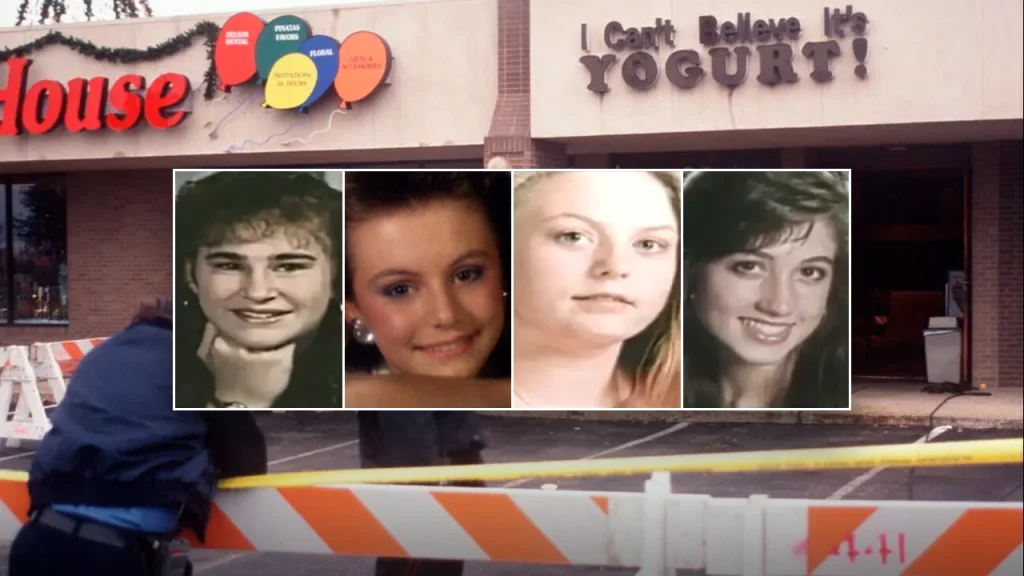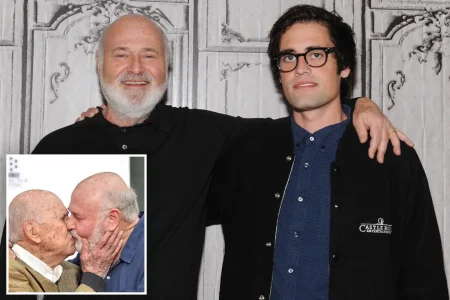The Yogurt Shop Murders: A 34-Year Mystery Finally Solved
After more than three decades of anguish, unanswered questions, and false leads, the Austin Police Department has finally identified the perpetrator behind one of the city’s most horrific crimes. In a breakthrough announcement on Monday, authorities revealed that DNA evidence has linked Robert Eugene Brashers, a now-deceased serial killer, to the 1991 “Yogurt Shop Murders” that claimed the lives of four teenage girls. “After 34 years, the Austin Police have made a significant breakthrough in one of the most devastating cases in our city’s history,” said Austin Police Chief Lisa Davis during the press conference. “This unthinkable crime has weighed heavily on the hearts of our community, the families of the victims and our detectives who have tirelessly pursued justice.”
The pivotal moment in solving this long-cold case came when advanced DNA testing revealed that genetic material found beneath 13-year-old Amy Ayers’ fingernails matched Brashers, who had previously been connected to homicides in Missouri and South Carolina. In what can only be described as a final act of courage, young Amy apparently fought back against her attacker, unknowingly collecting the evidence that would eventually bring clarity to her own murder. As her father, Bob Ayers, told the Austin American-Statesman with profound pride, “I have never been so proud of my daughter in all of my life… Our whole family knew there was something about Amy that would help solve this.” For a family that has lived with unimaginable grief and uncertainty since 1991, Bob’s simple statement, “This is over,” carries the weight of decades of waiting.
The horror began on December 6, 1991, when firefighters responding to a blaze at the I Can’t Believe It’s Yogurt shop in North Austin made a grisly discovery. Inside lay the bodies of four teenage girls: Eliza Thomas, 17; sisters Jennifer, 17, and Sarah Harbison, 15; and Sarah’s best friend Amy Ayers, 13. All had been shot in the head, and investigators believe some were sexually assaulted before the killer set fire to the scene in an attempt to destroy evidence. The fire and subsequent water damage from firefighting efforts compromised crucial physical evidence, setting the stage for one of Austin’s most challenging investigations. Despite thousands of tips over the years, the case eventually went cold, leaving families in an excruciating limbo of grief without closure.
The breakthrough came through a combination of persistence and scientific advancement. In June, investigators resubmitted ballistics data from a .380 caliber shell casing found at the yogurt shop to a federal database, which matched an unsolved 1998 case in Kentucky with similarities to the Austin murders. Then, in August, South Carolina investigators informed Austin detectives that new DNA testing on the sample from under Amy Ayers’ fingernail matched Brashers, confirming his connection to both the yogurt shop murders and a 1990 murder in South Carolina. Detective Kimberly Jackson poignantly observed, “Amy’s final moments on this Earth were to solve this case for us. It’s because of her fighting back.” Police are still piecing together why Brashers was in Austin that night, but they know he was stopped near El Paso just two days after the murders while driving a stolen truck from Georgia to Arizona.
Brashers, who died by suicide during a 1999 standoff with Missouri police, had already been identified as the perpetrator in several other violent crimes across multiple states. In 2018, DNA evidence connected him to the 1990 strangulation of a woman in South Carolina and the 1998 shootings of a mother and daughter in Missouri. He was also linked to the 1997 rape of a 14-year-old girl in Tennessee. The weapon used in the yogurt shop murders is believed to be the same .380 caliber handgun Brashers had when he died—a gun that had been confiscated during the El Paso stop but later returned to his father, who may have given it back to him. This pattern of violence across state lines paints the picture of a serial predator who evaded justice for years by staying mobile.
For the families of the victims, this resolution brings complicated emotions. Pam Ayers, Amy’s mother, told the Austin American-Statesman, “I can’t say I am happy. I’m not there. I am kind of numb. Knowing it is a serial killer, I am not sure that makes it worse, but I would have never thought it would be a serial killer. That is hard for me to process.” While Brashers can never be brought to justice in a courtroom, the identification offers a measure of closure to families who have lived with uncertainty for more than three decades. Austin Mayor Kirk Watson expressed hope that this breakthrough might help the community heal: “My hopefulness is that we can turn a page as a community and hopefully the final page on this horror that marked a very different time in Austin’s history. We can take heart in our growth and progress and strength as a city.” The investigation continues as detectives work with agencies in other states to trace Brashers’ movements and determine whether he is connected to additional unsolved crimes, but for the first time in 34 years, the most haunting question in this case—who did this?—has finally been answered.











